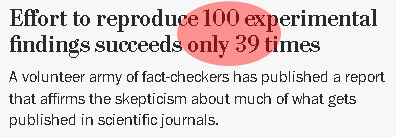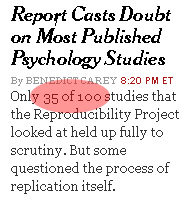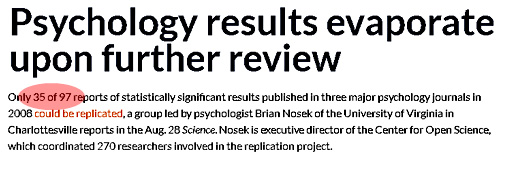The Washington Post informs me today that in a new study, only 39 out of 100 published psychology studies could be replicated:

I wonder if I can replicate that headline? Let’s try the New York Times:

Huh. They say 35 out of 100. What’s going on? Maybe Science News can tell me:

Now it’s 35 out of 97. So what is the answer?
Based on the study itself, it appears that Science News has it right. It’s 35 out of 97. Using a different measure of replication, however, the answer is that 39 percent of the studies could be replicated, which might explain the Post’s 39 out of 100. And it turns out that the study actually looked at 100 results, but only 97 of them had positive findings in the first place and were therefore worth trying to replicate. But if, for some reason, you decided that all 100 original studies should be counted, you’d get the Times’ 35 out of 100.
So there you go. Depending on who you read, it’s either 35, 36, or 39 percent. Welcome to the business of science reporting.















